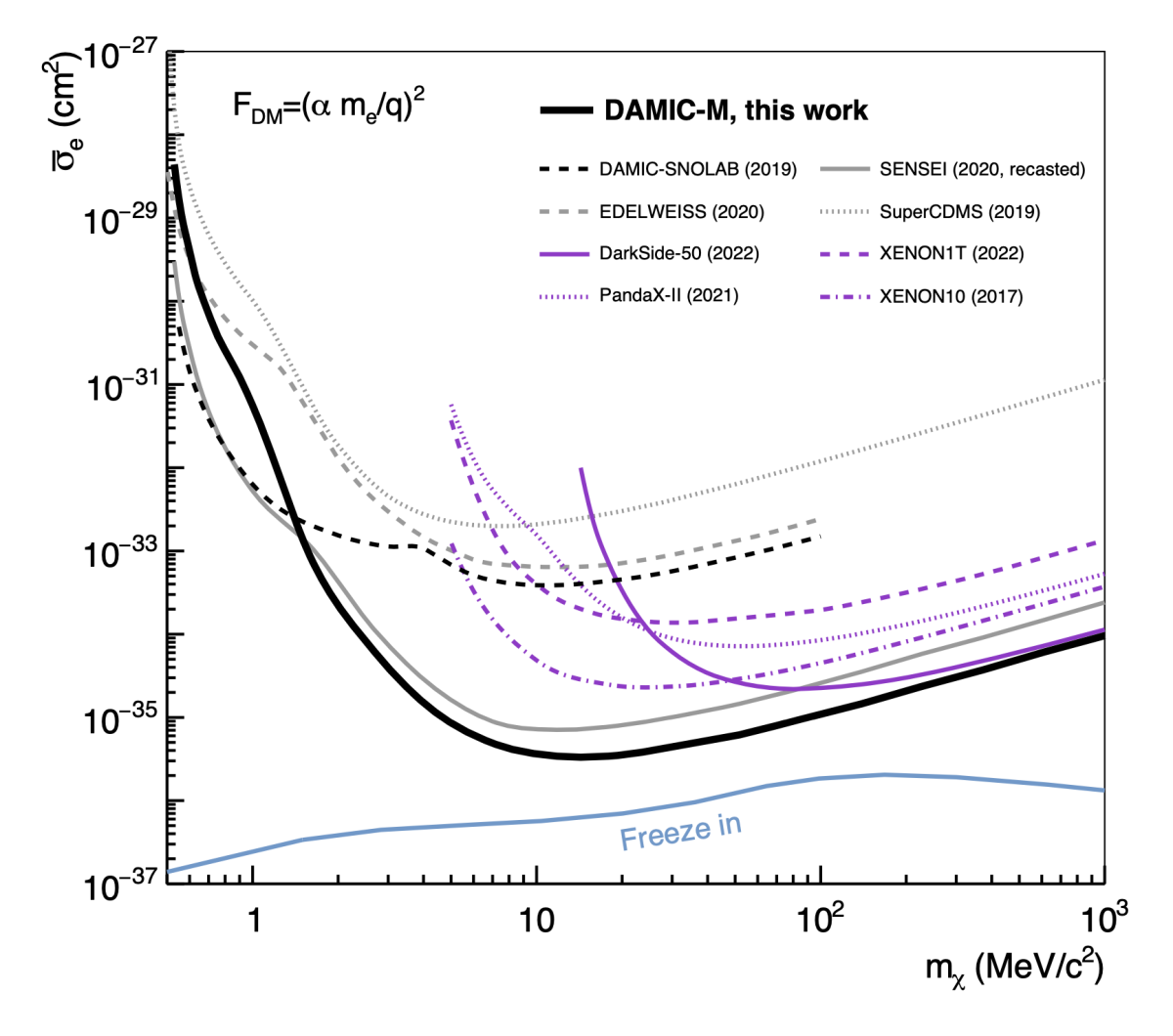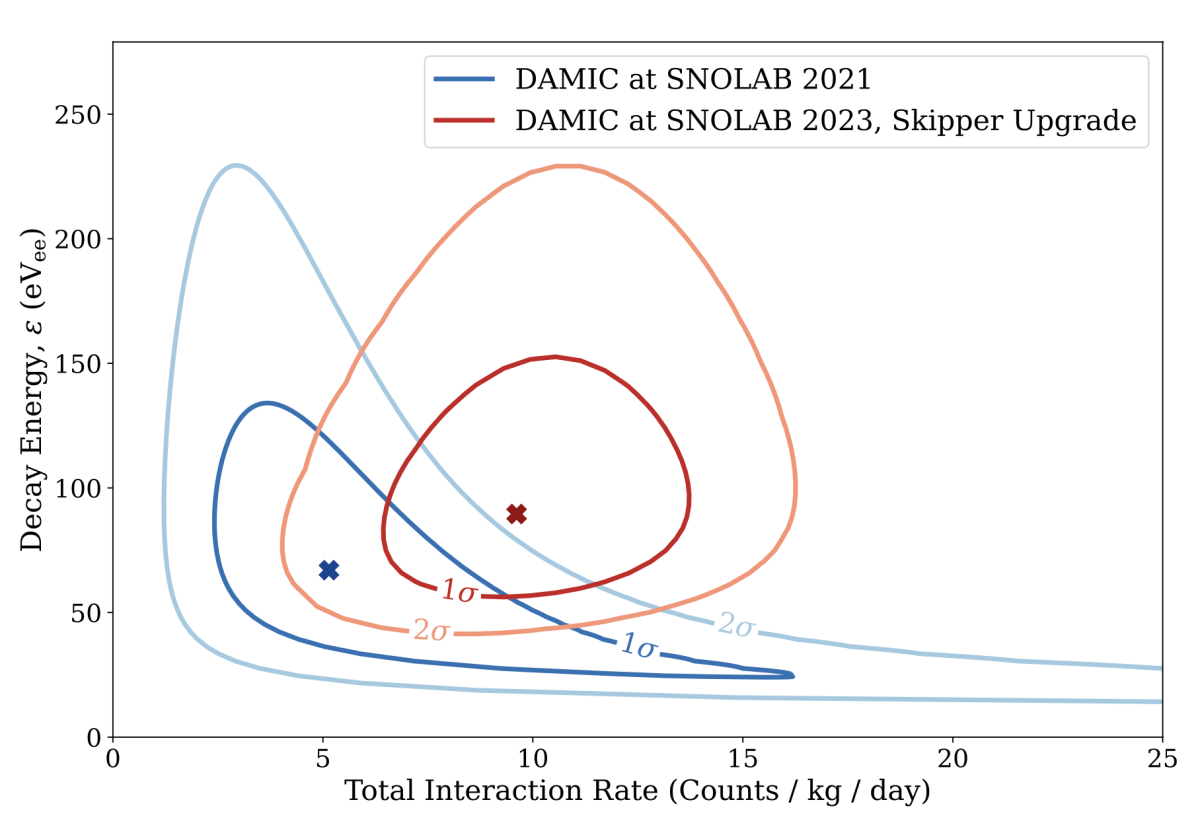Submitted by chavarri on
This year 2023 has been a busy time for the DAMIC group at UW. Here are the scientific highlights so far:
- The excess of ionization events in the bulk of our CCDs, first observed in our 2020 WIMP search, was confirmed with much more sensitive skipper CCDs that we installed in DAMIC at SNOLAB. The preprint is on the arXiv. The origin of the excess remains a mystery. There is no good "known-physics" explanation and the most straightforward dark matter interpretation is in tension with results from other experiments.
- Measurements of the ionization spectrum at lower energies provided world-leading constraints on the existence of dark matter particles with masses in the MeV scale. For this measurement, we operated two CCDs very similar to those at SNOLAB in the Low Background Chamber (LBC) at the Modane Underground Laboratory. The first spectral analysis was published in PRL, while a second analysis that considers the time evolution of the possible signal to extend the sensitivity to smaller dark matter masses is on the arXiv.
- In an effort led by graduate student Kellie McGuire, we developed a technique to discriminate between nuclear and electronic recoils in the CCD target. The preprint is on the arXiv. This technique has huge potential since it may allow future CCD dark matter detectors to separately study the different interaction channels (i.e., with either nuclei or electrons) of dark matter particles.
- Prof. Chavarria's proceedings from Low Radioactivity Techniques 2022 conference were published. The paper succinctly summarizes the background suppression capabilities of CCDs and the hybrid CMOS imagers that we develop for Selena.
|
|
|
| Left: Exclusion limit from DAMIC-M's LBC for dark matter particles interacting with electrons via an ultralight mediator. In this scenario, we have world-leading sensitivity for a wide range of dark matter particle masses. Right: Comparison between the exponential event excess observed in DAMIC at SNOLAB in the original experiment from 2020 and the upgraded detector in 2023. The y and x axes provide the decay and amplitude of the exponential spectrum, respectively. | |


